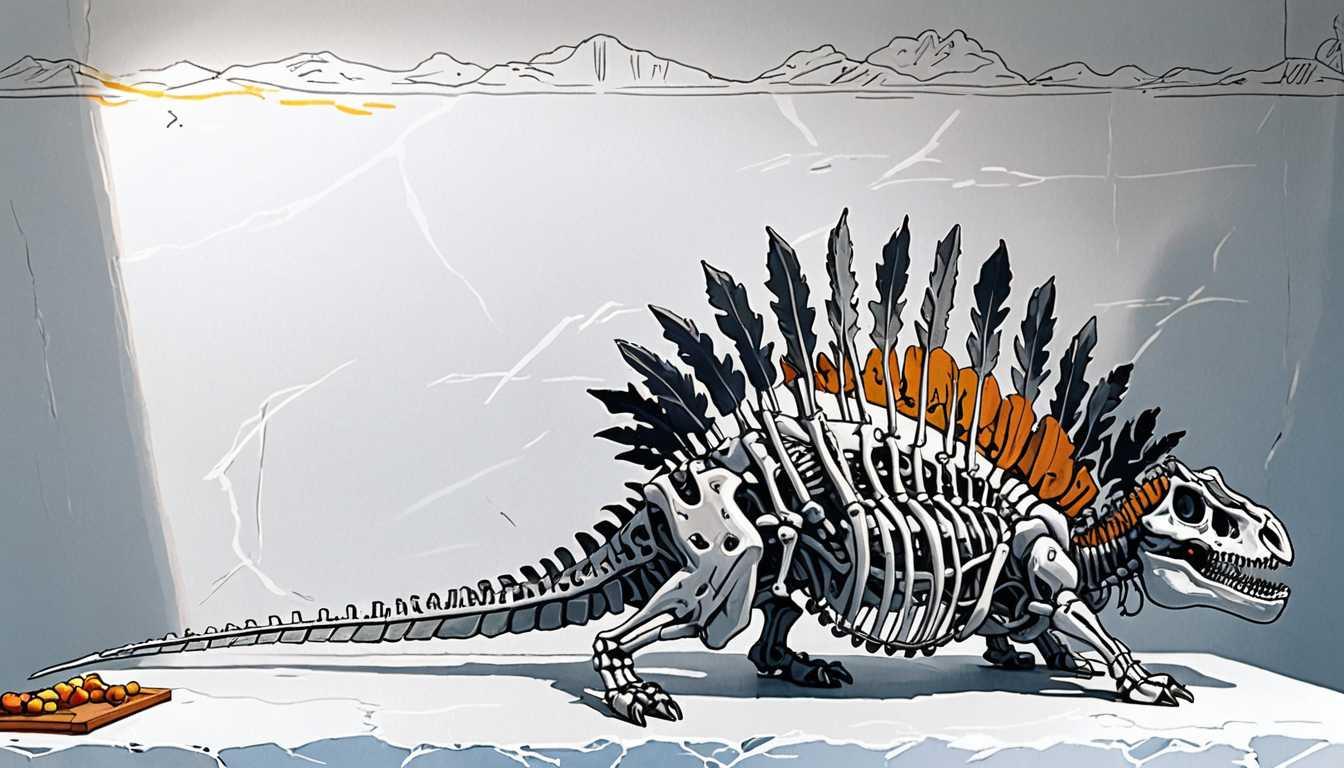Claws for Digging & Dazzling Displays
February 2023
University of Bristol
Introduction
Ever wondered if dinosaurs had a flair for interior design or were just showing off? Researchers from the University of Bristol and Beijing's IVPP have cracked the case on some peculiar theropod dinosaurs' claws. Turns out, the tiny, chicken-sized alvarezsaurs were the ancient world's diggers, using their robust claws to burrow, while their gigantic cousins, the therizinosaurs, sported metre-long, sickle-like claws more for dazzling displays than combat. With a mix of CT scans and biomechanical wizardry, this study unveils the secret lives of these prehistoric oddballs. Dive into the world where dinosaurs wield claws like samurai swords and engage in the ultimate peacock-style showdown!
READ FULL ARTICLEWhy It Matters
Discover how this topic shapes your world and future
Digging Deep into Dinosaur Claws
Imagine holding a tool so powerful it could tell stories from millions of years ago. Dinosaur claws, those ancient marvels, are just that. But why should you care about something as seemingly mundane as dinosaur claws? Well, these claws reveal the secrets of survival, adaptation, and even the art of showing off among the colossal creatures that once roamed our planet. By studying these fascinating features, scientists have unlocked tales of tiny dinosaurs with robust claws used for digging into ant hills, and giant relatives wielding claws as long as swords, not for battle, but for boasting. This journey into the past isn't just about understanding dinosaurs; it's about marveling at the diversity of life and the intricate ways in which creatures evolve over time to fit into their world. For you, it's a vivid reminder that adaptation and innovation are key to overcoming challenges, whether you're a tiny dinosaur or a student exploring the vast world of knowledge.
Speak like a Scholar
Biomechanics
The study of the structure and function of biological systems using the methods of mechanics.
Theropod
A group of bipedal dinosaurs, including both carnivorous and herbivorous species, known for their three-toed limbs.
Alvarezsaurs
A family of small, bird-like dinosaurs known for their single large claw on each hand, believed to have been used for digging.
Therizinosaurs
A group of large, herbivorous theropod dinosaurs characterized by their long necks, broad torsos, and uniquely long, sickle-like claws.
Sexual selection
A mode of natural selection where certain traits become more pronounced in a species because they increase an individual's chances of mating and producing offspring.
Computational approach
Using computer simulations and models to study and predict the behavior of complex systems, like the biomechanics of dinosaur claws.
Independent Research Ideas
The role of claws in dinosaur communication
Investigate how different dinosaurs might have used their claws not just for physical tasks but as tools for non-verbal communication, such as mating displays or territorial threats.
Comparative anatomy between birds and dinosaurs
Explore the evolutionary links between the claws of modern birds and their dinosaur ancestors, highlighting how certain functions and structures have persisted or changed over time.
Engineering inspired by dinosaur claws
Design tools or machinery that mimic the unique biomechanical properties of dinosaur claws, such as digging equipment or robotic arms for precise, delicate tasks.
The evolution of feeding mechanisms in herbivorous dinosaurs
Examine how the diet and feeding strategies of dinosaurs like the therizinosaurs influenced the development of their distinctive claws and other anatomical features.
Dinosaur claws and ecosystem impact
Analyze how the digging and foraging behaviors facilitated by certain dinosaur claws could have affected the Cretaceous ecosystems, including soil composition and plant distribution.
Related Articles

Unlocking the Secrets of the Elgin Marvel
June 2024
University of Bristol

From Sprawled to Upright: Mammal Evolution Unveiled
November 2024
Harvard Gazette

Ancient Seas: Unveiling Tunicate Mysteries
July 2023
Harvard University

Kangaroos: Not Always Hoppers
June 2023
University of Bristol

From Dino Arms to Bird Wings
February 2023
Phys Org